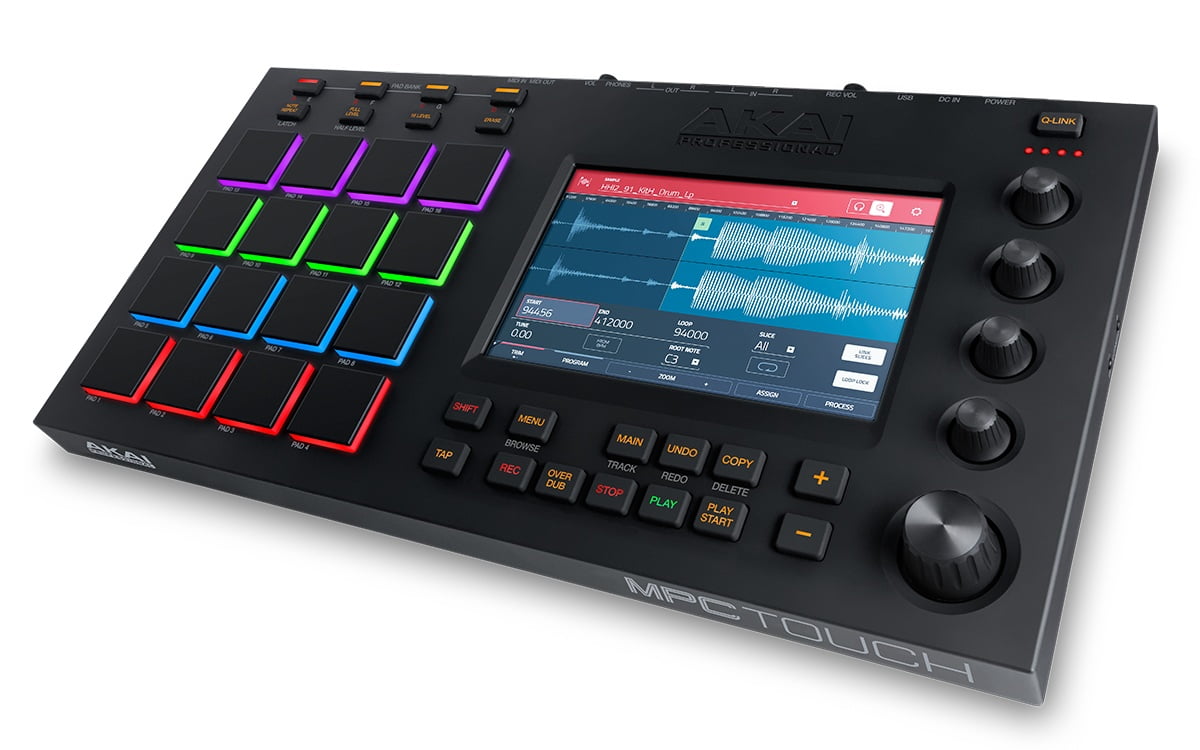

On the back of the unit are audio inputs and outputs on quarter-inch jacks and a headphone output with volume control, evidence that the MPC Touch is also an audio interface that provides for direct sampling and monitoring. The other rubber buttons register your push with a satisfying click. The colour backlit pads are the same as those I recently enjoyed on the new MPDs, with their best-in-class feel and sensitivity.

The hardware in question is an attractively compact, solid slab, with the standard 4x4 pad grid to the left, touchscreen to the right, plus four rotary encoders, a larger data wheel, and a modest selection of dedicated buttons. Like the Renaissance and Studio MPCs, the Touch is a hybrid system that pairs a controller with an app or plug-in running on a Mac or PC, but the touchscreen is a big change that promises (and largely succeeds) to unite software and hardware into a true hands-on production workstation. The MPC has always been about its fast, hands-on interface - can a touchscreen make it even better?Īkai’s MPC Touch joins the established line-up of current generation MPCs, but rather than simply adding another form factor it offers a fundamentally different interaction model.


 0 kommentar(er)
0 kommentar(er)
